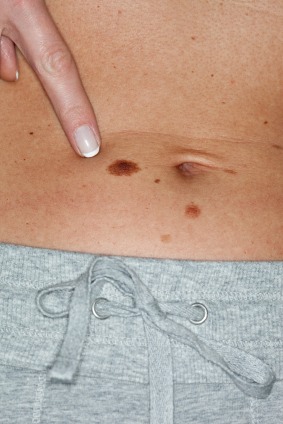
We have all heard it umpteen times: sun safety tips such as “wear sunscreen daily” and reminders to check your skin for any noticeable changes—especially if you are at risk for skin cancer. But it’s estimated that only one in five people wears sunscreen properly on a daily basis. And for those of us with moles, it’s likely that we don’t get our skin checked at least once a year by our family doctor.
With summer rumoured to be right around the corner, and Sun Awareness Week just passed, here is a quick refresher on moles and skin cancer risks.
What’s Your Risk?
If you have one or more of the following factors, you are at an increased risk of skin cancer:
- History of skin cancer – either personal or familial
- Fair skin
- Many moles – >50 on your body
- Excessive sun exposure
- History of sun burns – particularly during your youth
- Use of tanning beds – particularly during your youth
At Risk? What to Do
If you fall into the ‘at risk’ group, make an annual appointment to see your family doctor for a mole check. If you notice any unusual skin changes or a mole looks to be atypical (abnormal), make an appointment right away. If your doctor is concerned about the mole in question, he or she will most likely refer you to a dermatologist for a full-body mole review.
What is an Abnormal Mole?
Everyone knows at least one of the signs of an atypical mole—but it can be tough to remember all the warning signs of melanoma and other skin cancers. The memorable “ABCDEs of Melanoma” used by skin cancer organizations can help:
A for Asymmetry – two halves of the mole don’t match
B for Border – uneven or ‘scalloped’ edges
C for Colour – multiple colours (black, red, blue grey or white within the lesion) and is changing unlike the moles around it
D for Diameter – larger than 6mm (1/4”)
E for Evolving – any change in size, shape, colour or any new symptoms, i.e. bleeding or itching
Are Moles Covered by MSP?
All visits that are referred to a dermatologist are covered by MSP. The family doctor must forward a referral to our office by fax in order to book you in with one of our dermatologists for an examination.
The referral will cover a period of six months for the first and any subsequent visits that occur within the six-month period. If the referral expires before the visits are completed, a new referral will be required from the family doctor to cover the visit. (Note: Our dermatologists do not get paid more because this second referral is required—it is mandated by MSP to ensure that specialist care is truly required).
Mole removal is only covered by MSP if a biopsy shows atypical cells or is suggestive of melanoma. Therefore, we charge patients for mole removal but will refund the amount if the results show it to be atypical.